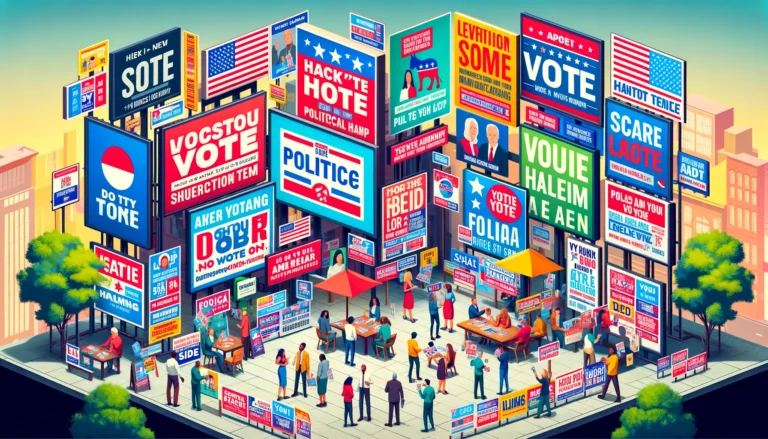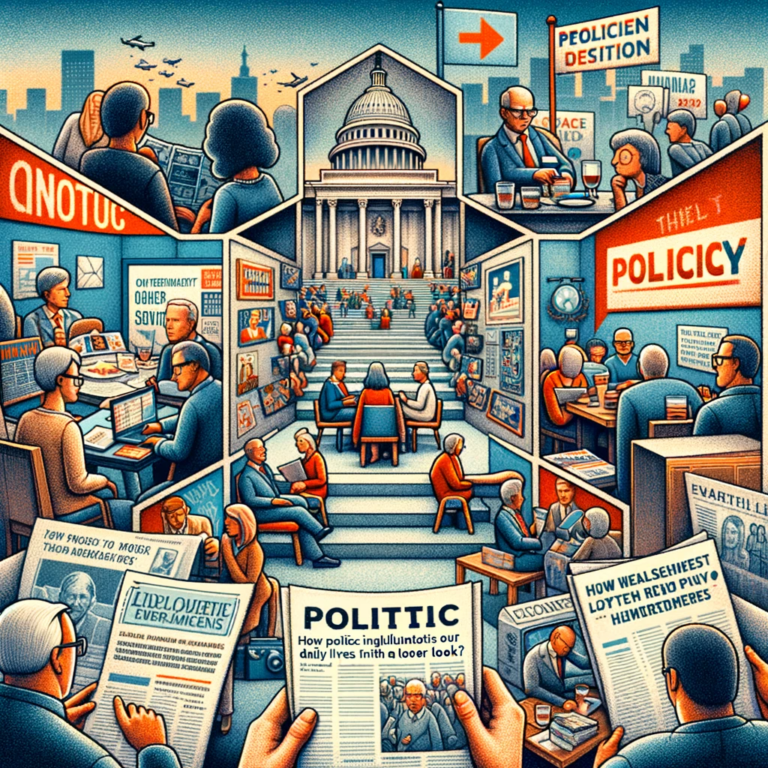Impact of Negative Political Advertising on Voter Behavior
Negative political advertising has become a staple in modern election campaigns. These ads are designed to highlight the flaws, mistakes, and undesirable qualities of political opponents. But what impact do they have on voter behavior? In this article, we will delve into the nuances of negative political advertising, its effects on voters, and the broader implications for democracy.
The Rise of Negative Political Advertising
Negative political advertising has a long history, but its prevalence has surged with the advent of television and the Internet. These ads are crafted to elicit strong emotional responses, often focusing on fear, anger, and distrust. The primary goal is to sway voter opinions by presenting the opponent in a highly unfavorable light.
How Negative Ads Influence Voter Perception
Negative ads can be incredibly influential in shaping voter perceptions. Here are some key ways they influence voter behavior:
- Emotional Impact: Negative ads often evoke strong emotions, which can lead to a more memorable and lasting impression of the candidate or issue being attacked.
- Reinforcement of Preexisting Beliefs: These ads can reinforce the beliefs of voters who are already inclined to support the attacking candidate, making them more committed and less likely to change their minds.
- Deterrence of Voter Turnout: Negative ads can also discourage voter turnout by creating a sense of disillusionment and cynicism, making people feel that all candidates are equally flawed.
- Persuasion of Undecided Voters: For undecided voters, negative ads can tip the balance by providing new information that sways their opinion towards the attacking candidate.
Psychological Mechanisms Behind Negative Ads
The psychological mechanisms at play in negative political advertising are complex. Let’s explore some of the primary factors:
- Negativity Bias: Humans are wired to pay more attention to negative information than positive information. This bias means that negative ads are more likely to be noticed and remembered.
- Emotional Arousal: Negative ads are designed to provoke emotional arousal, which can interfere with rational decision-making and lead to more gut-level reactions.
- Confirmation Bias: Voters tend to seek out information that confirms their existing beliefs. Negative ads can provide this confirmation, reinforcing preexisting attitudes.
Case Studies: Notable Examples of Negative Political Advertising
To better understand the impact of negative political advertising, let’s look at some notable examples from recent history:
The “Daisy” Ad (1964)
One of the most famous negative ads in political history is the “Daisy” ad, used by Lyndon B. Johnson’s campaign against Barry Goldwater. The ad depicted a little girl counting petals on a daisy, followed by a nuclear explosion. The implication was that Goldwater’s policies would lead to nuclear war. The ad was highly influential in creating fear and doubt about Goldwater’s suitability as president.
Swift Boat Veterans for Truth (2004)
In the 2004 presidential election, the Swift Boat Veterans for Truth ran ads attacking John Kerry’s military service record. These ads questioned Kerry’s heroism and integrity, significantly damaging his reputation and contributing to George W. Bush’s re-election.
The “Willie Horton” Ad (1988)
During the 1988 presidential campaign, George H.W. Bush’s campaign used an ad featuring Willie Horton, a convicted felon who committed crimes while on furlough. The ad aimed to portray Michael Dukakis as soft on crime, and it played on racial fears and stereotypes. The ad was highly influential in turning voters against Dukakis.
The Ethical Implications of Negative Advertising
While negative political advertising can be effective, it raises significant ethical concerns. These ads often rely on misleading information, exaggerations, and personal attacks, which can distort the truth and contribute to a toxic political environment. Here are some of the key ethical issues:
- Misinformation: Negative ads often contain misleading or outright false information, which can deceive voters and undermine informed decision-making.
- Character Assassination: These ads frequently involve personal attacks that focus on the opponent’s character rather than their policies, which can distract from substantive political debate.
- Polarization: Negative ads contribute to political polarization by deepening divisions and fostering an “us vs. them” mentality among voters.
Balancing Negative and Positive Campaign Strategies
To mitigate the harmful effects of political advertising, campaigns must find a balance between negative and positive messaging. Positive ads that highlight a candidate’s strengths, vision, and policies can help to create a more constructive and informative campaign environment. Here are some strategies for achieving this balance:
- Issue-Focused Messaging: Campaigns should focus on substantive issues and policy proposals rather than personal attacks.
- Fact-Checking: Ensuring the accuracy of information in ads can help to build trust with voters and promote informed decision-making.
- Civility in Discourse: Promoting civility and respect in political discourse can help to reduce the toxicity of negative advertising.
Understanding the impact of negative political advertising on voter behavior is crucial for anyone interested in the dynamics of modern elections. Negative ads, with their emotional and psychological influence, play a significant role in shaping voter perceptions and outcomes. By examining historical examples and considering ethical implications, we gain valuable insights into the strategies employed in political campaigns and their effects on democratic processes. For those looking to delve deeper into this topic, exploring the psychological mechanisms and ethical considerations provides a comprehensive understanding of how negative advertising affects voter behavior.
The Future of Political Advertising
As we look to the future, the landscape of political advertising is likely to continue evolving. With the rise of social media and digital platforms, negative ads can spread more quickly and reach a broader audience than ever before. This presents both challenges and opportunities for political campaigns:
Social Media and Negative Ads
Social media platforms have become a powerful tool for disseminating negative political ads. These platforms allow for highly targeted advertising, enabling campaigns to reach specific demographics with tailored messages. However, the spread of misinformation and the lack of regulation pose significant challenges.
The Role of Fact-Checking
Fact-checking organizations play a crucial role in combating misinformation in political ads. By verifying the accuracy of claims made in ads, these organizations help to hold campaigns accountable and ensure that voters have access to reliable information.
Voter Education
Educating voters about the tactics used in negative political advertising can empower them to make more informed decisions. By understanding the strategies and psychological mechanisms behind these ads, voters can better assess the information presented to them.
Conclusion
Negative political advertising is a powerful tool that can significantly influence voter behavior. While it can be effective in swaying opinions and reinforcing preexisting beliefs, it also raises ethical concerns and contributes to a polarized political environment. By balancing negative and positive campaign strategies and promoting fact-checking and voter education; we can work towards a more informed and constructive political discourse.
Understanding the impact of negative political advertising on voter behavior is essential for anyone engaged in the political process, from campaign strategists to everyday voters. By staying informed and critically evaluating the messages we encounter, we can contribute to a healthier and more democratic electoral system.






